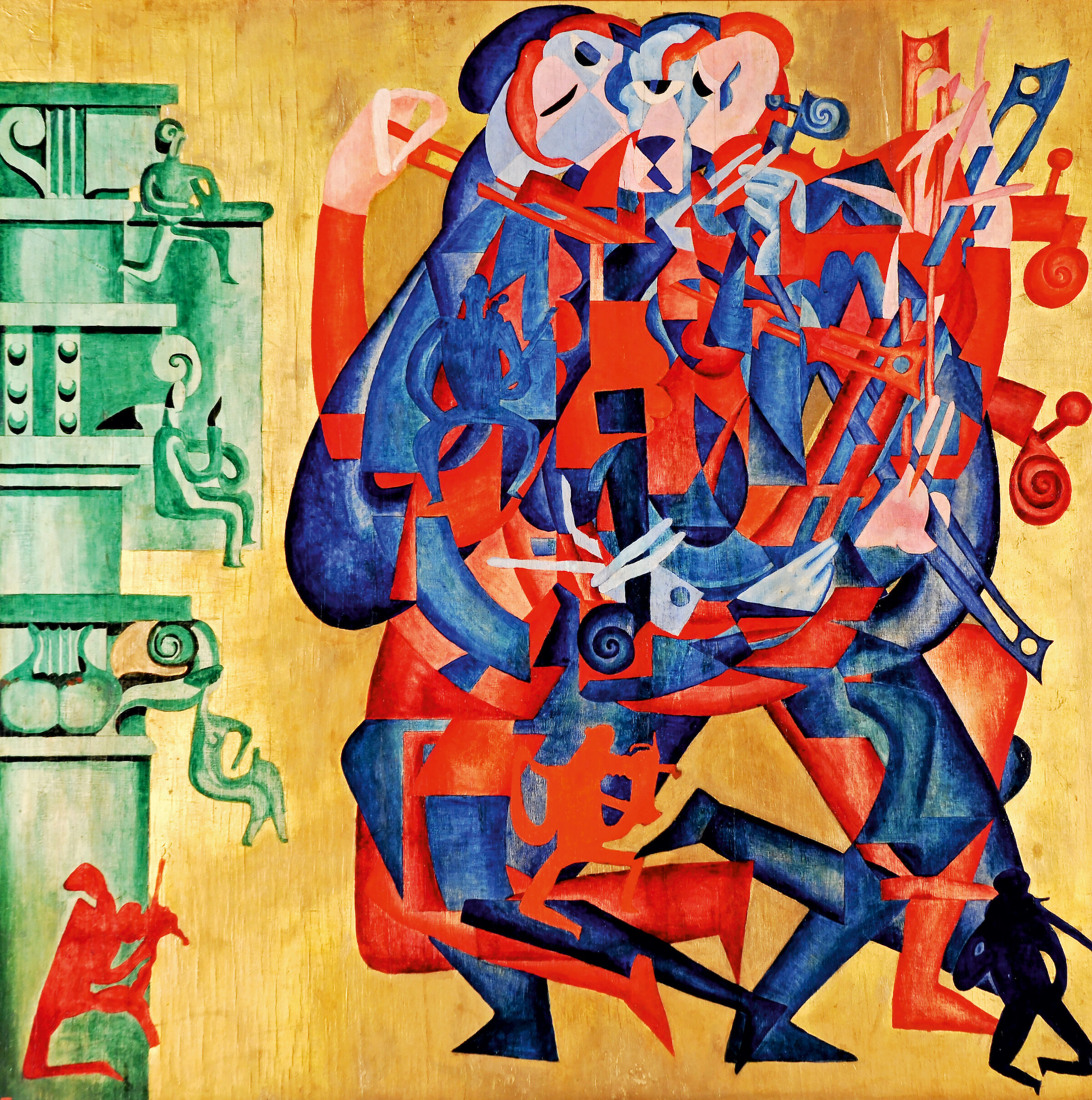Curt Stenvert

Curt Stenvert, Violinspieler in vier Bewegungsphasen, 1947
Oil on wood
119 x 117 cm, frame: 121 x 123.5 x 4 cm
Courtesy Artothek des Bundes, permanent loan at the Belvedere, Vienna © Bildrecht, Vienna 2023
Curt Stenvert undertook parts of his studies together with other key Fantastic Realists in the class of Albert Paris Gütersloh, one of the most important pioneers of the Vienna school of Fantastic Realism and an important figure in the postwar avant-garde in Austria. Shortly after the foundation of the Art Club, which was very significant for the Vienna art scene, Gütersloh was named as its president. This legendary association of artists, of which Stenvert was also a member, included names like Elfriede Gerstl, Friedensreich Hundertwasser, Maria Lassnig, Frederike Mayröcker, Arnulf Rainer, and Oswald Wiener. Various artistic approaches came together here in a fairly undogmatic manner. But this state of affairs did not last long, and the first members left the club, including surrealists. Nonetheless this relatively short period of time was very formative for Austrian postwar modernism, when the Fantastic Realists, the abstract artists, surrealists, and moderate expressionists were all working at the same time.
It might be said that the various movements in art and literature in the following decades all went back to the Vienna restaurant Strohkoffer and its links to the Art Club. This is also the case for the Fantastic Realists, which Stenvert himself never really belonged to, although there is some proximity to them in his painting. He often exhibited his works alongside Fantastic Realists in Art Club exhibitions, for example in the Neue Galerie in Linz.
The work on show here, Violinspieler in vier Bewegungsphasen (Violin Player in Four Phases of Movement) of 1937, not only shows an interest in depicting movement, but also follows a cubist tradition in composition. Stenvert overlaps and interlinks the different phases of movement in the figure of the musician. The figure is in blue and red, for two phases each, and the violin is suggested by the flourish of the scroll and the position of the bow. The other movements of the body are vague, but the artist has given viewers some assistance, as the four playing positions are also depicted in isolation in miniature, in the right and left bottom corners of the picture, and with a red figure at knee height and a blue figure at breast height of the large figure.
Like many other avant-garde artists, Stenvert came to be interested in different media and began to work with film and in the film industry. This interest can already be seen in his paintings, as the cubist view of objects is strongly influenced by multiple exposures in photography and by the invention of film. Stenvert became a key protagonist in postwar cinema, and the Linz filmmaker and author Peter Tscherkassky describes the influence of his debut as follows: “The Raven, a 13-minute film of the poem of the same name by Edgar Allan Poe, is often seen as marking the beginning of the Austrian avant-garde. At that time it was still called an ‘outsider’s production,’ and this work by Kurt Steinwendner (alias Curt Stenvert) and Wolfgang Kudrnofsky indeed shows one thing above all: that film can be used as a very personal and independently designed medium. That at that time literature still strongly influenced film concepts, and served as legitimation, is also shown by The Raven.”1
Noting how interlinked the different genres of art were at the beginning of the avant-garde, it is not at all surprising that Stenvert so playfully switched between various media and forms of production, and thereby brought about fruitful exchange.
- Peter Tscherkassky, “Die rekonstruierte Kinematografie. Zur Filmavantgarde in Österreich,“ in Avantgardefilm Österreich. 1950 bis heute, ed. Alexander Horwath, Lisl Ponger, Gottfried Schlemmer, Vienna 1995, p. 10.